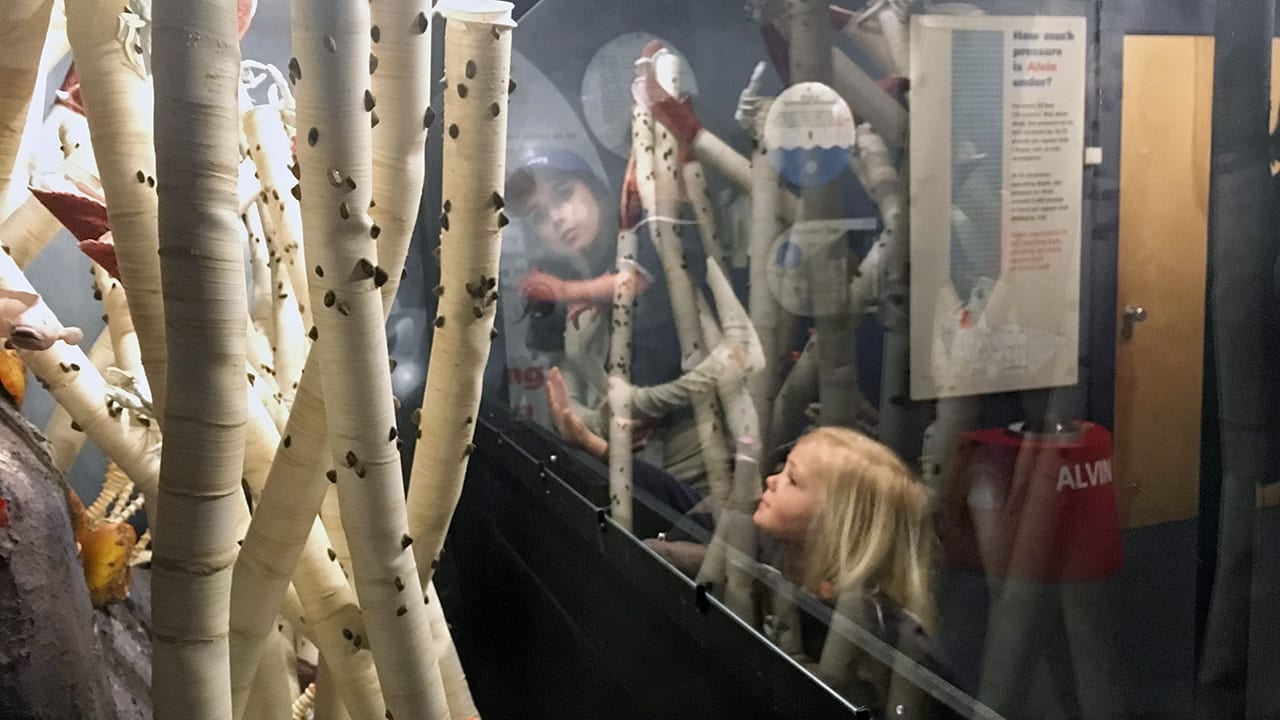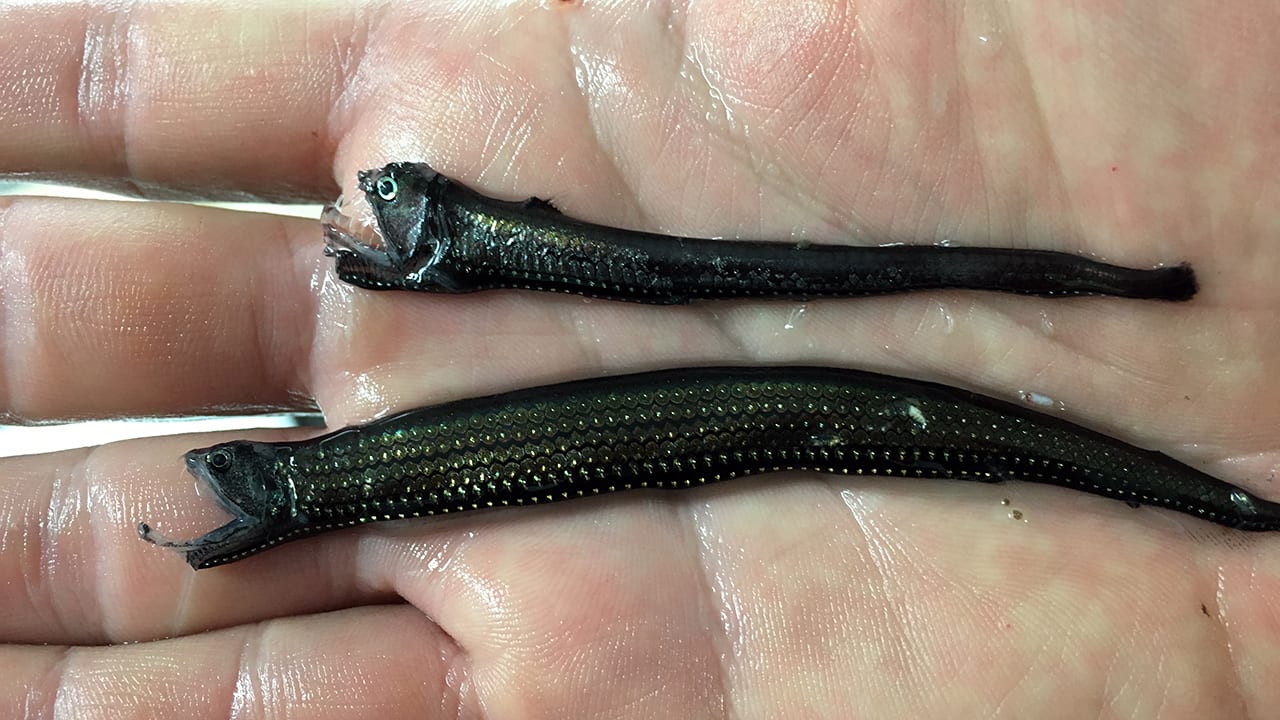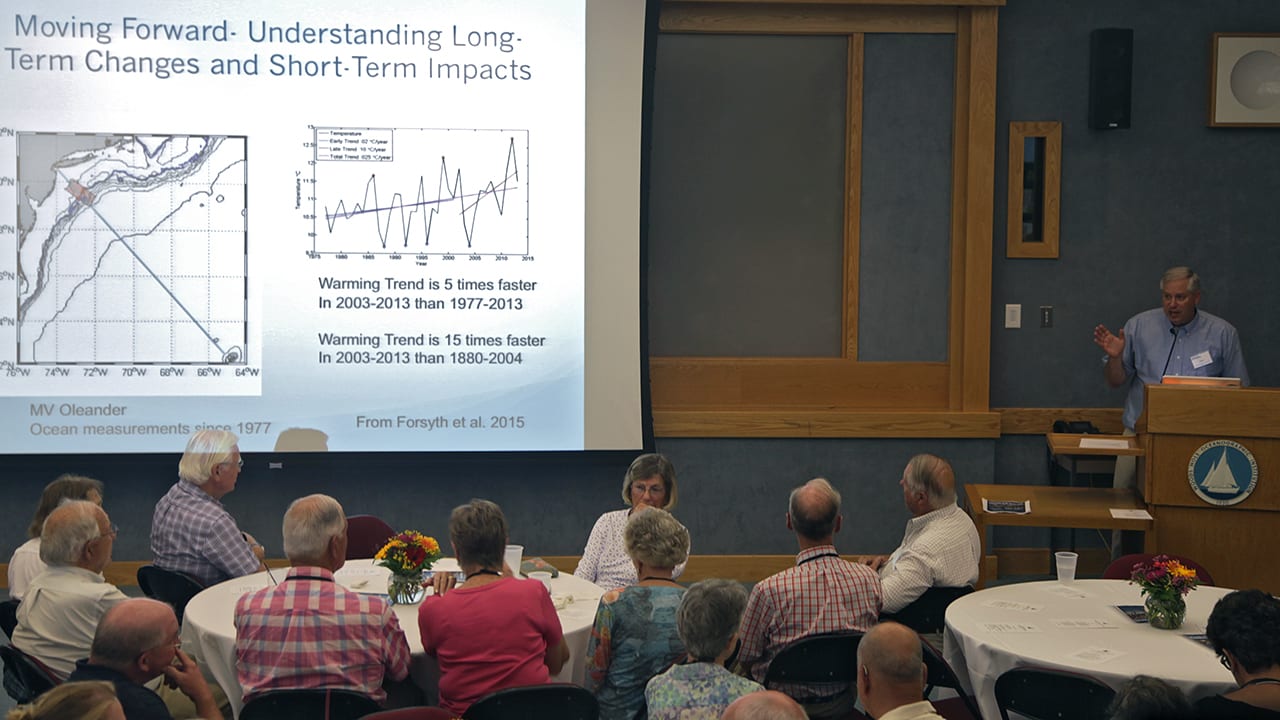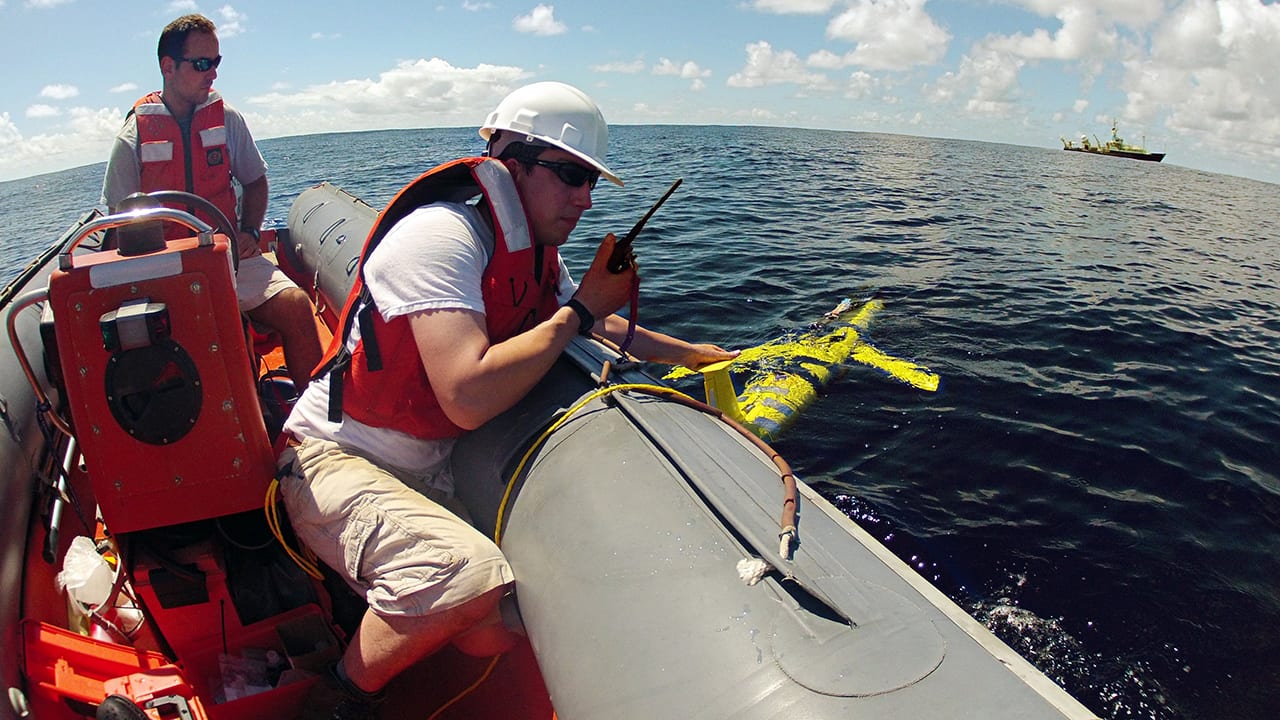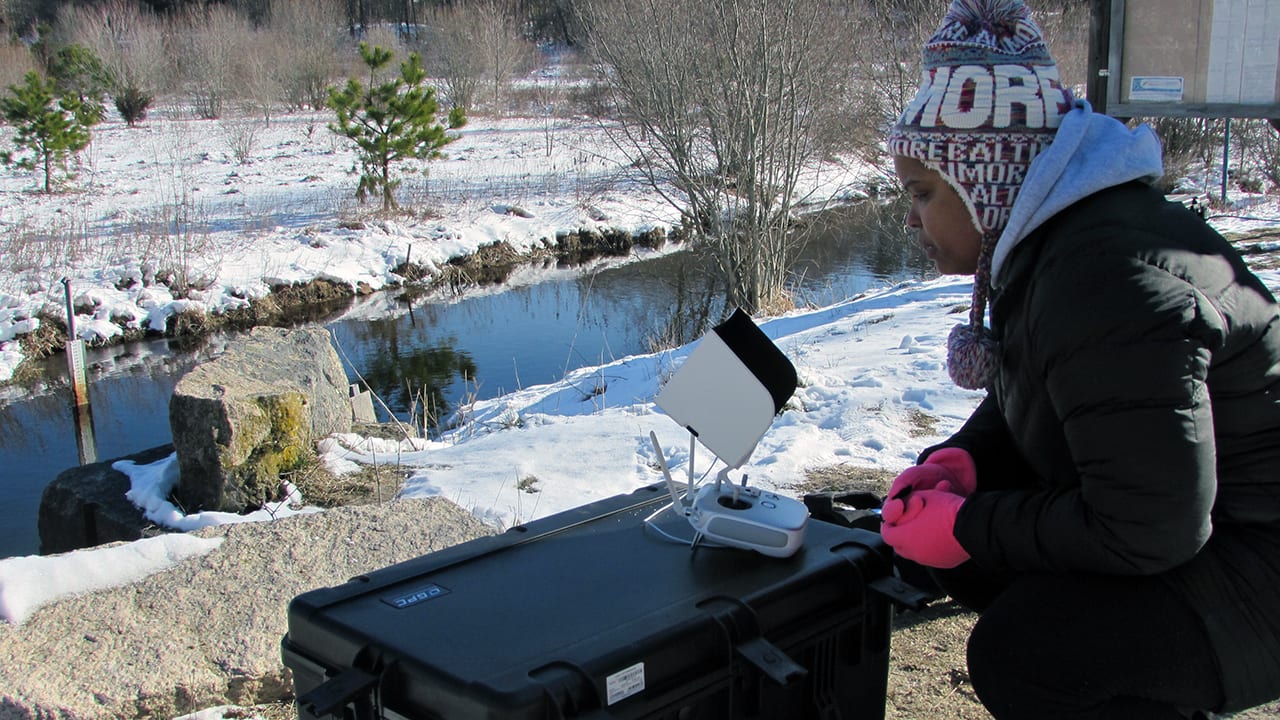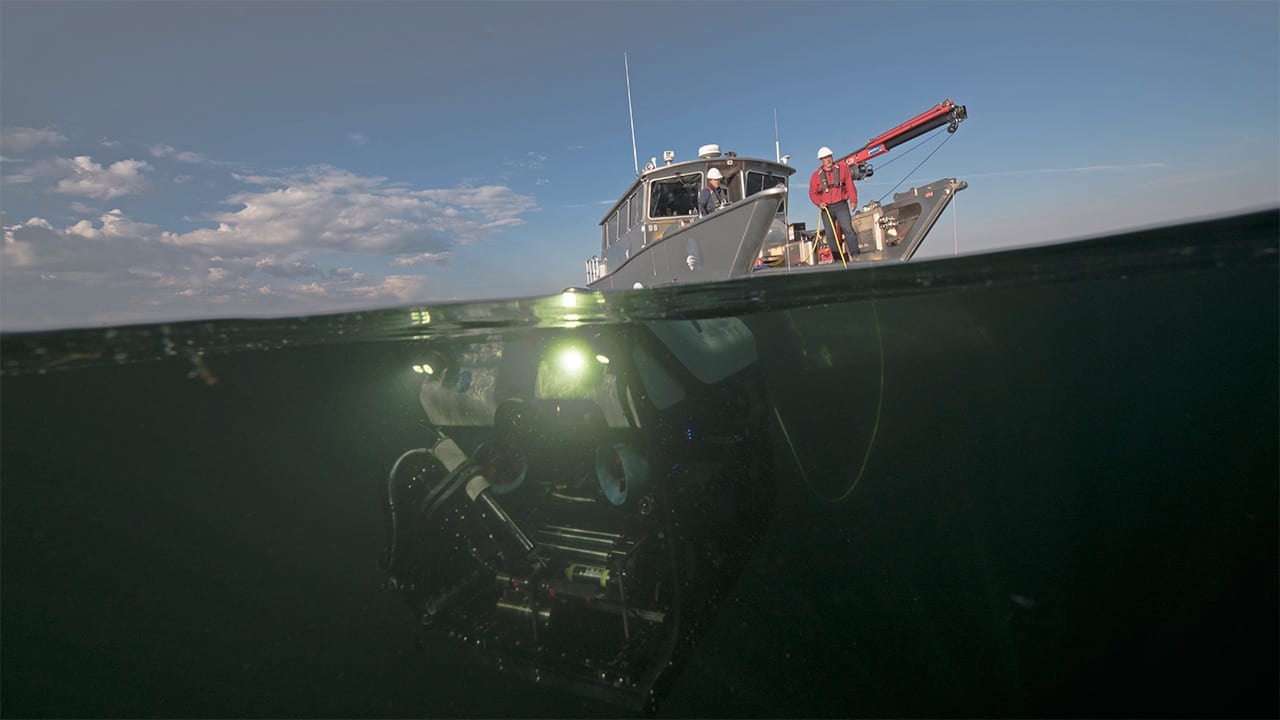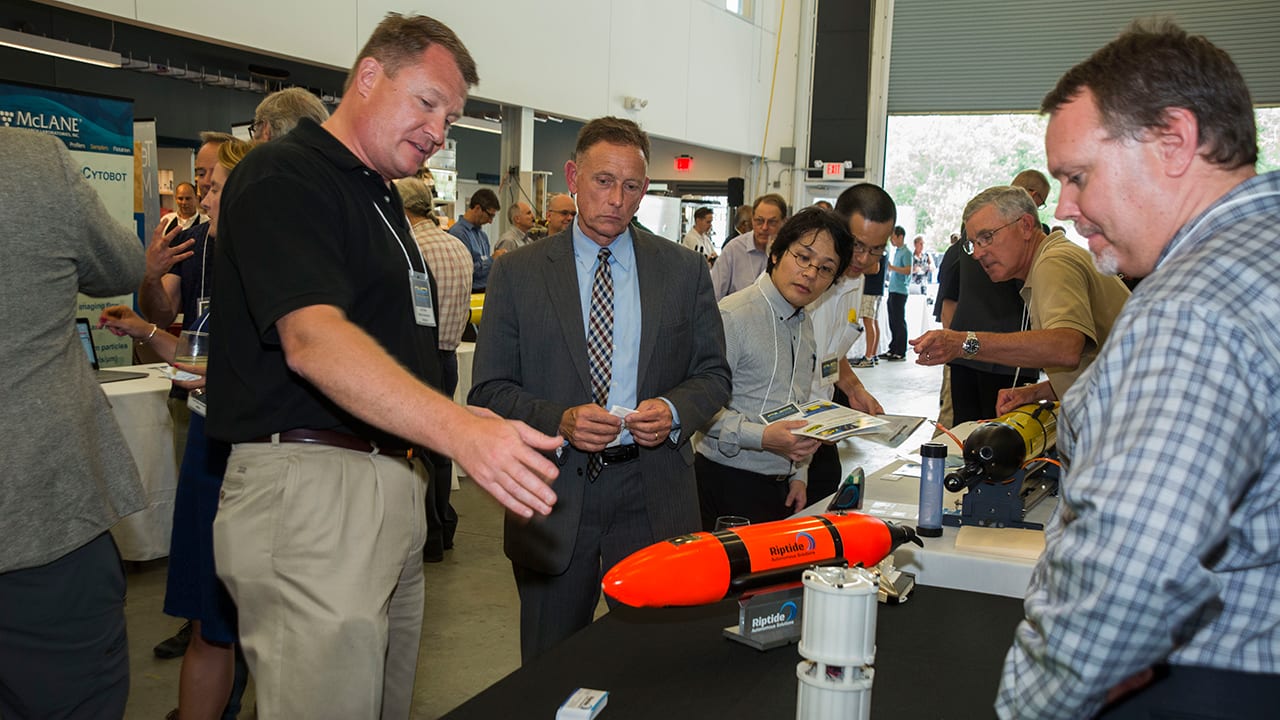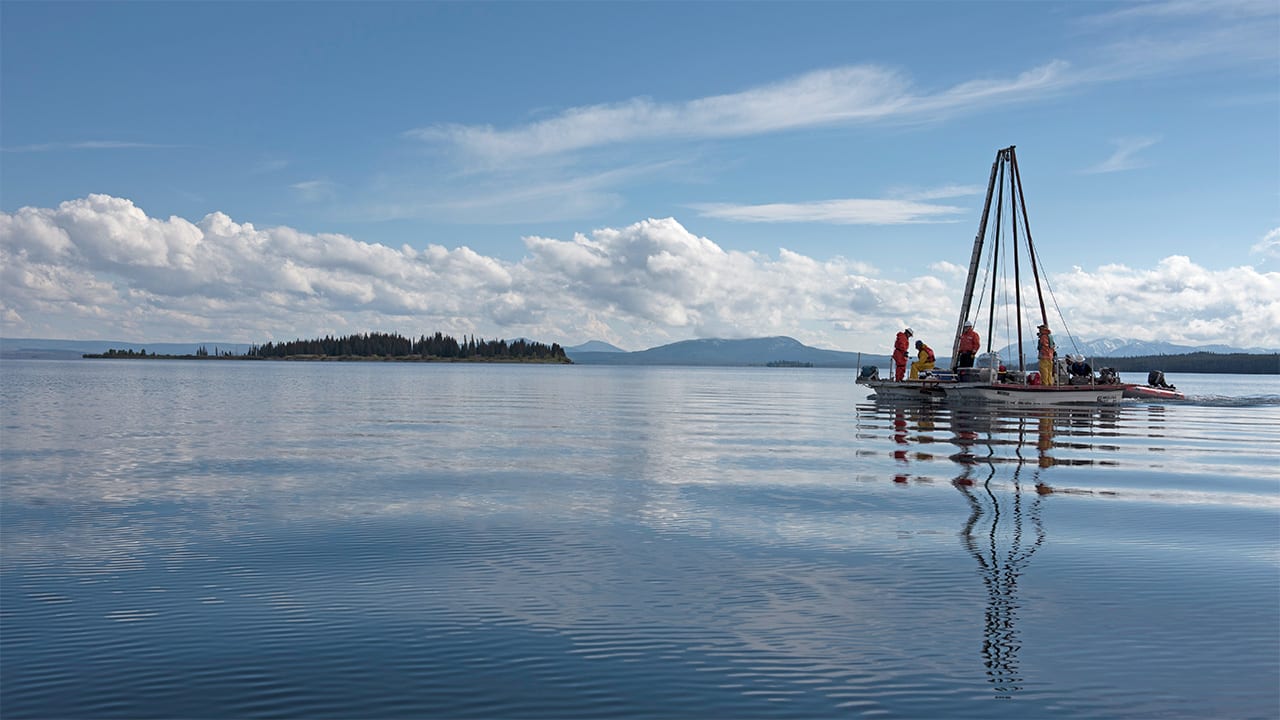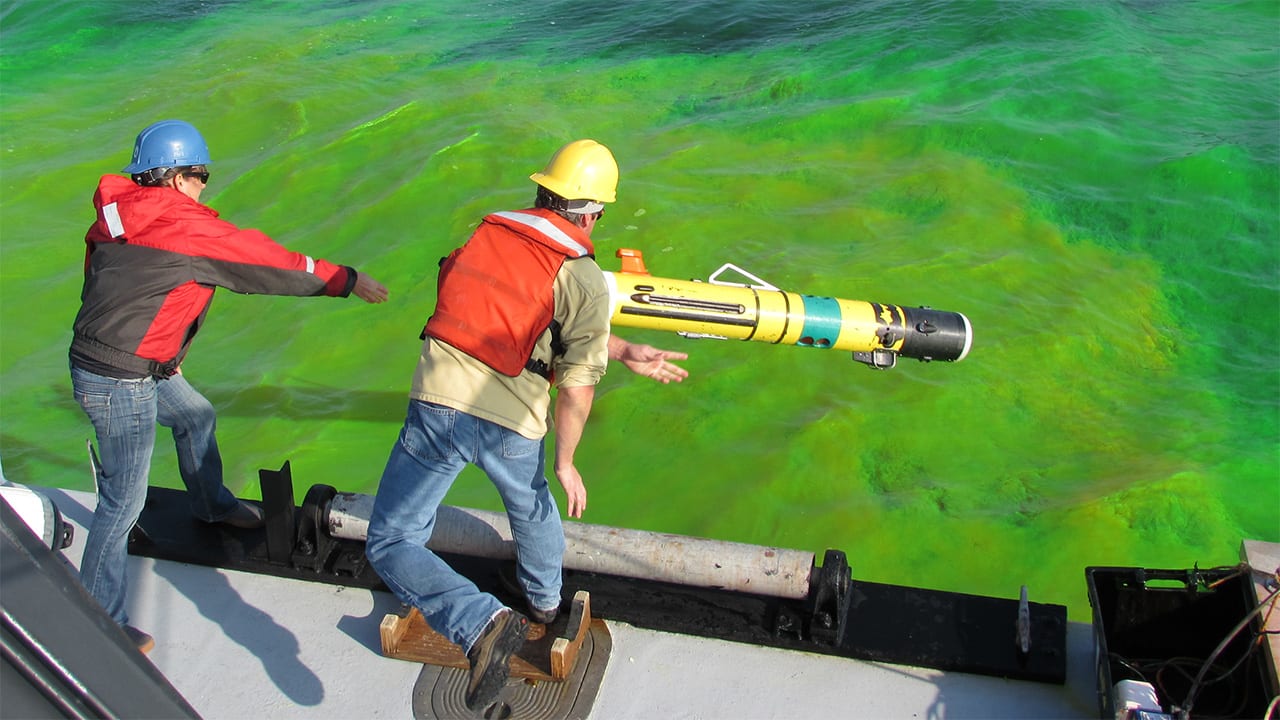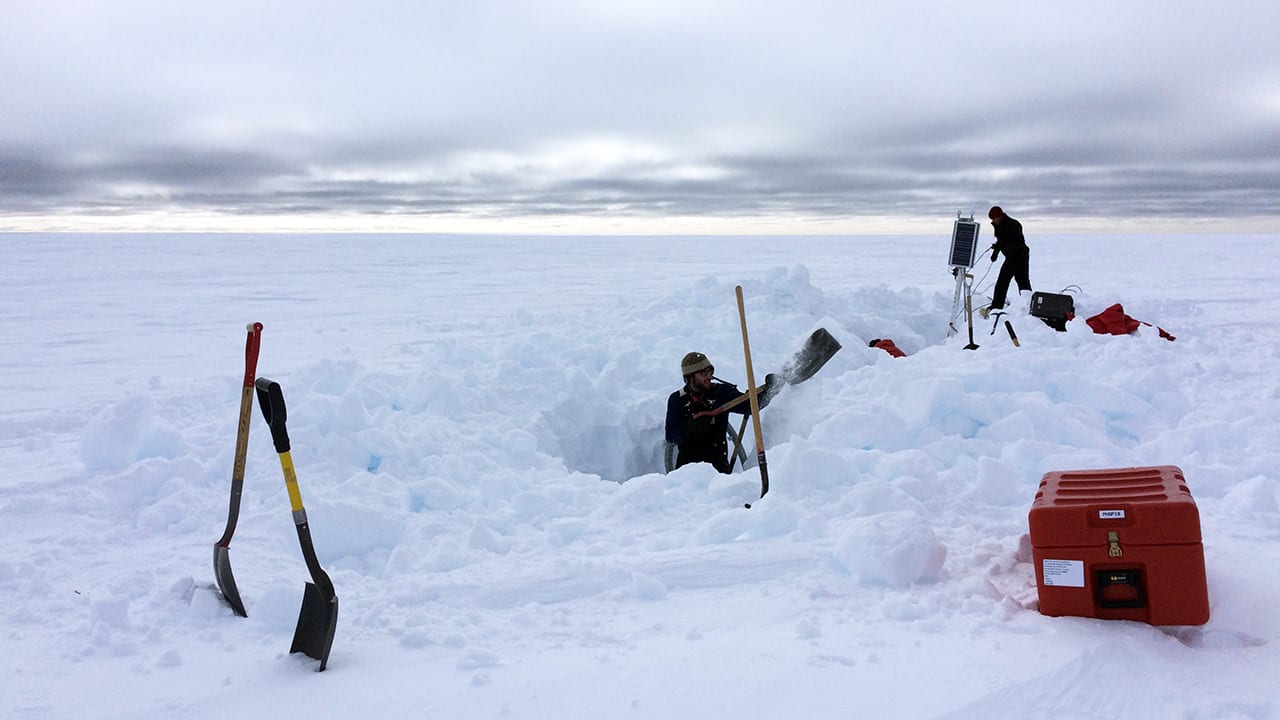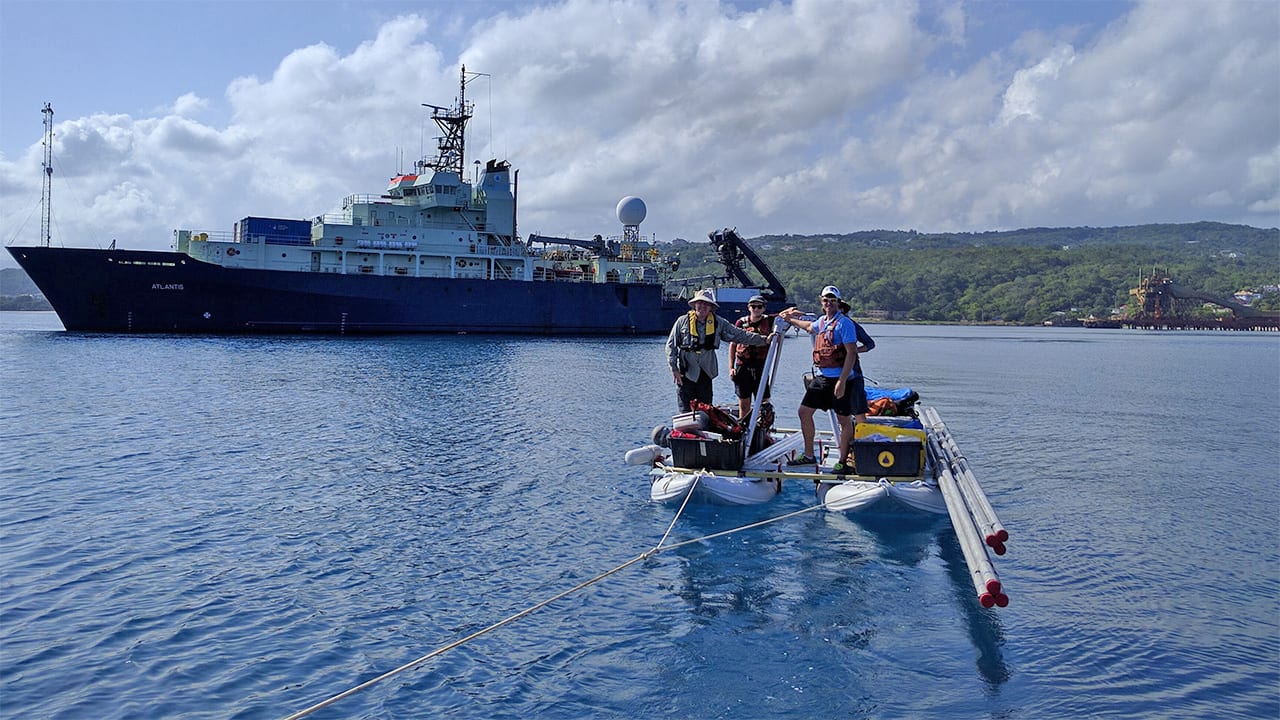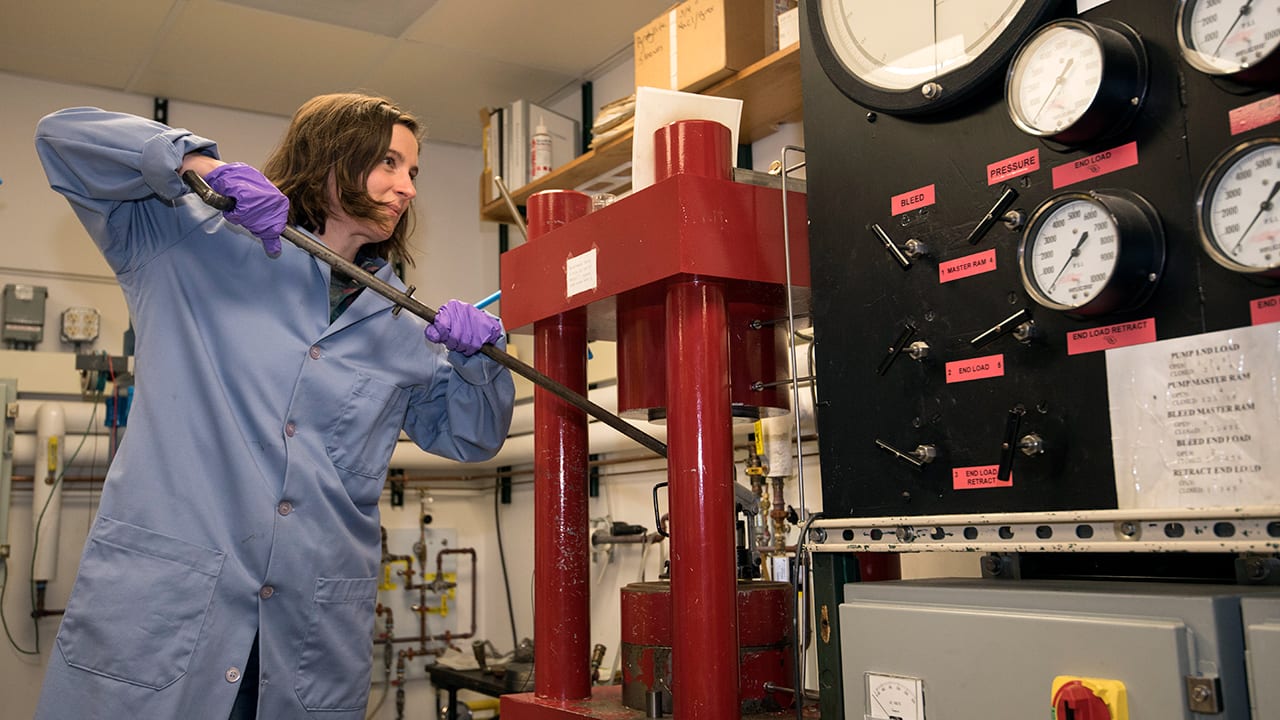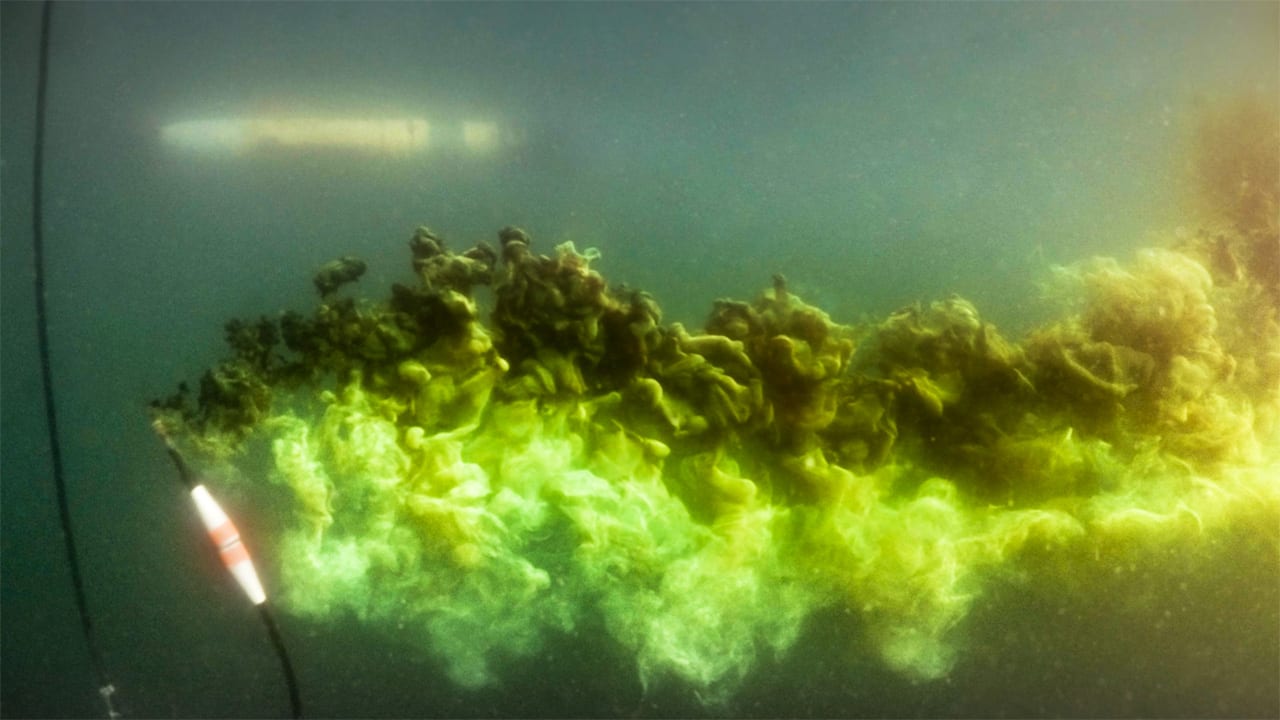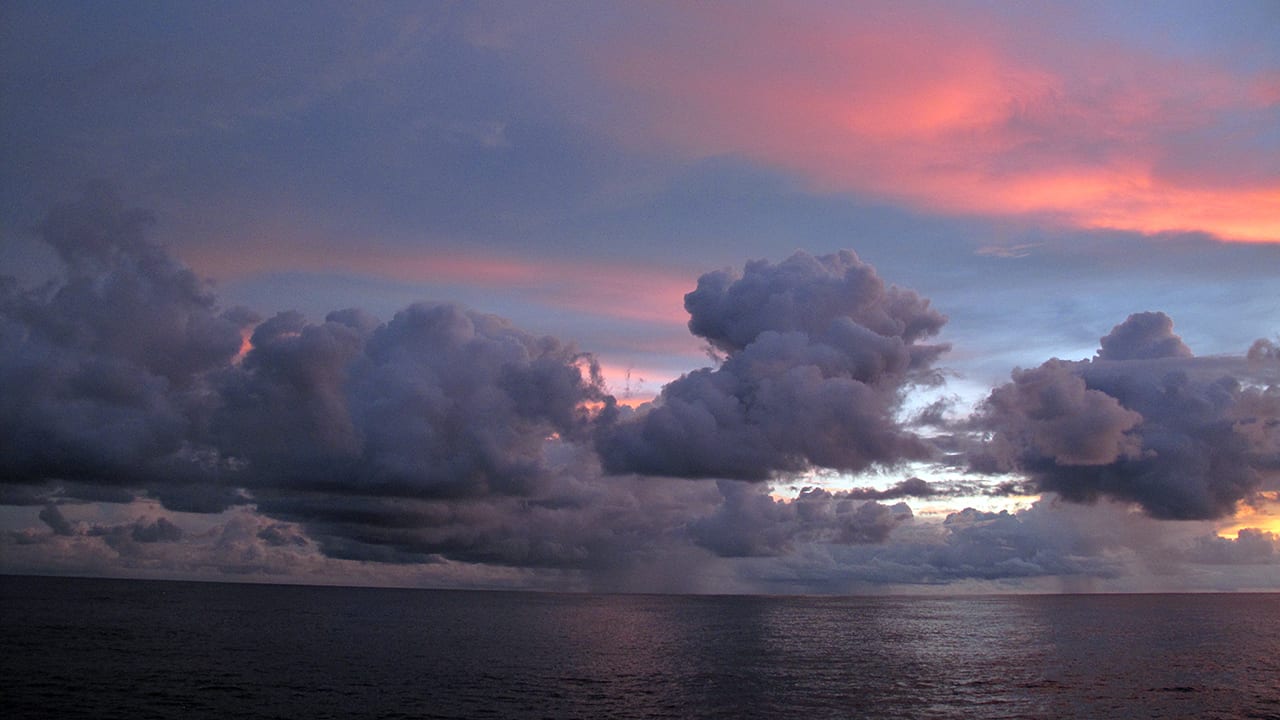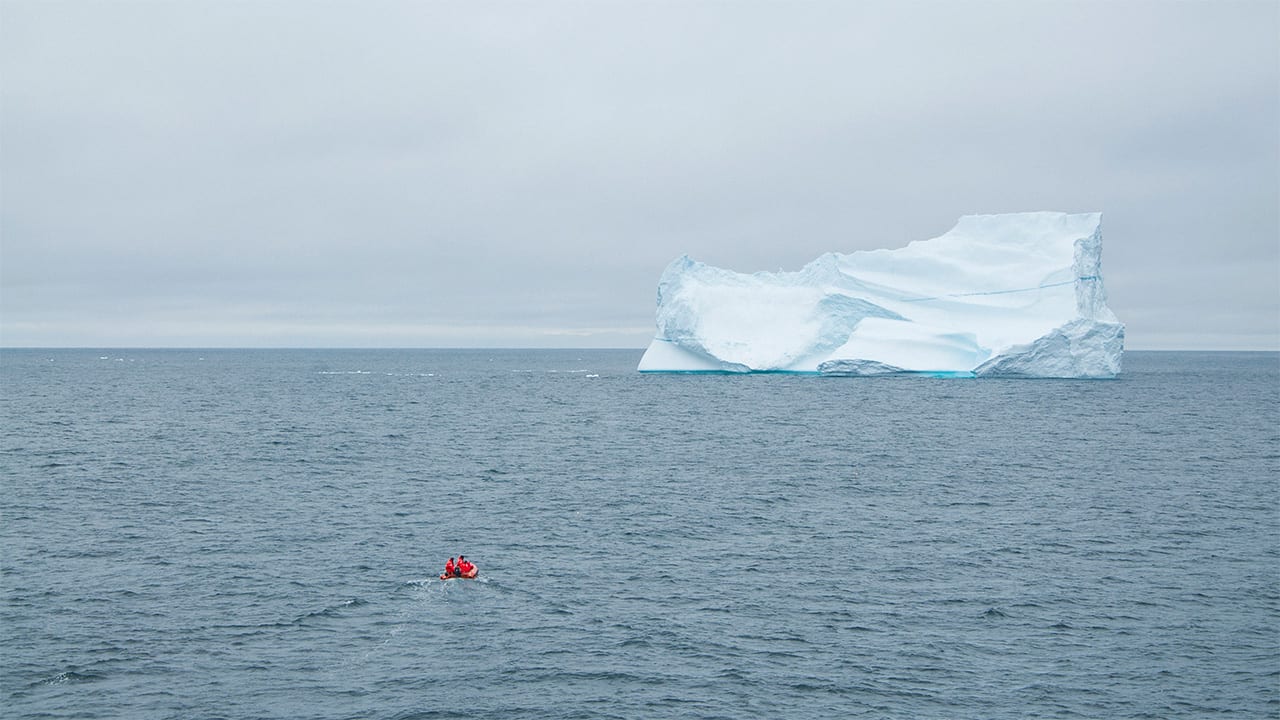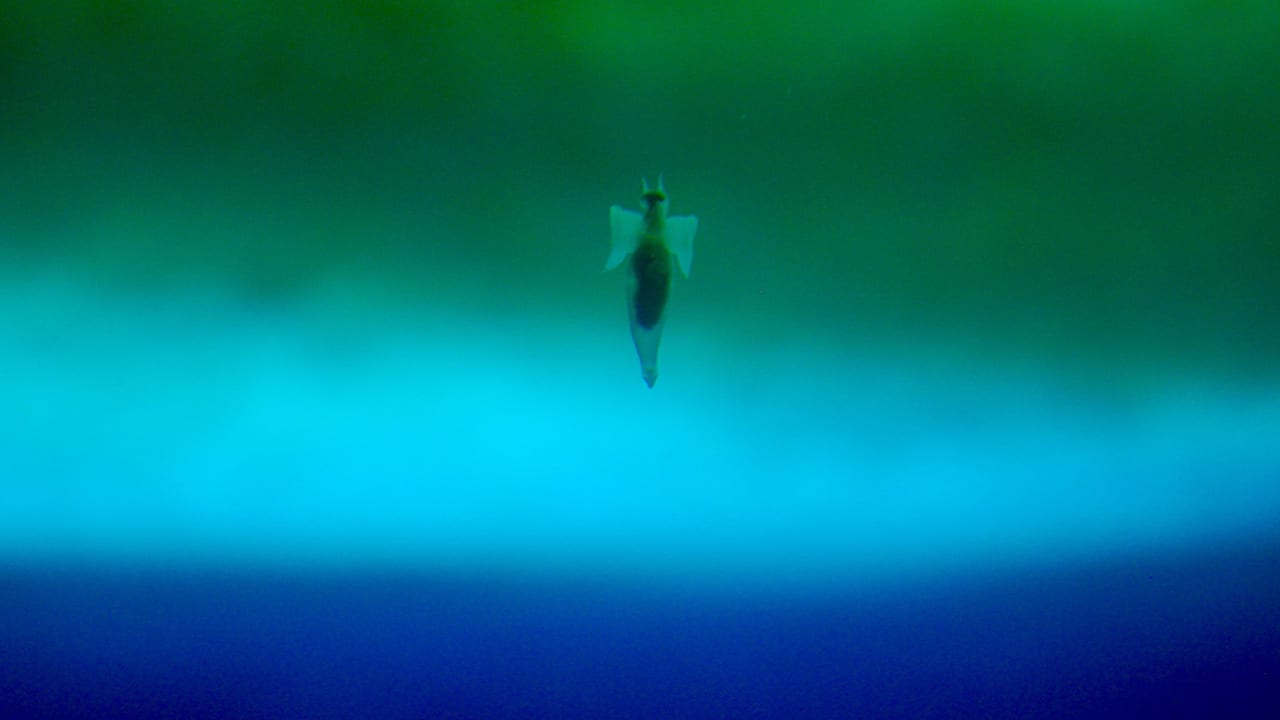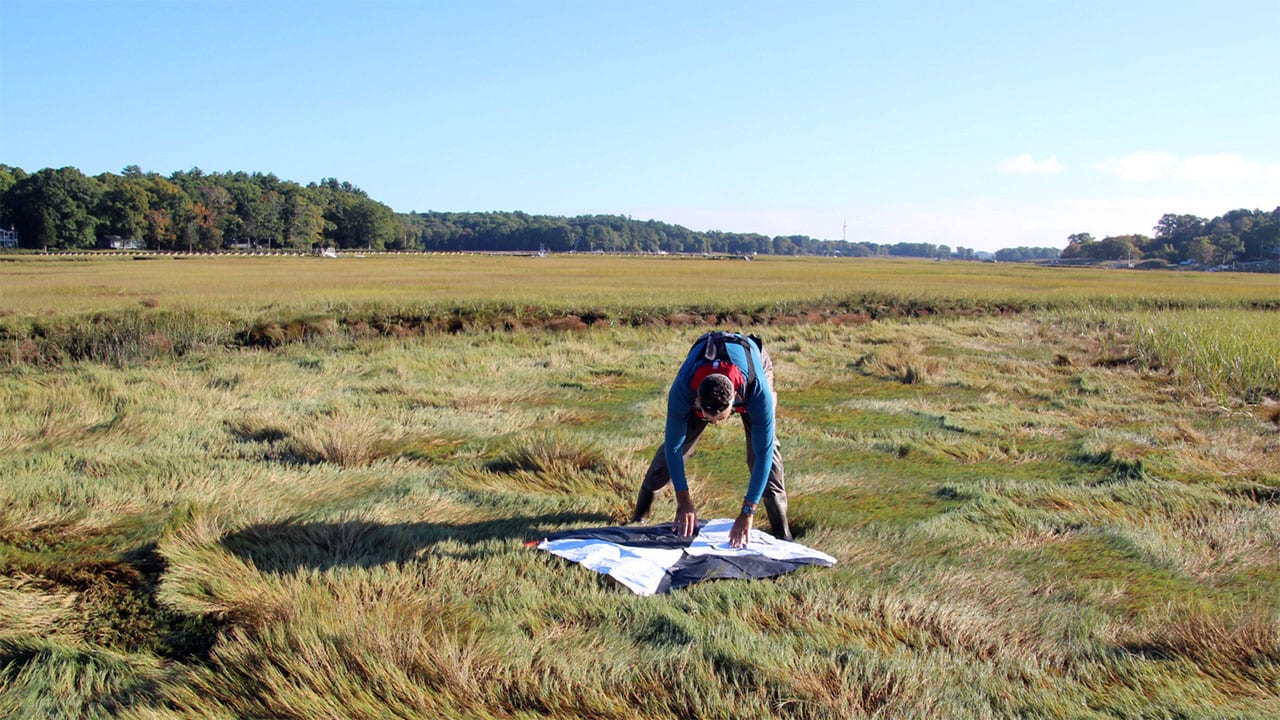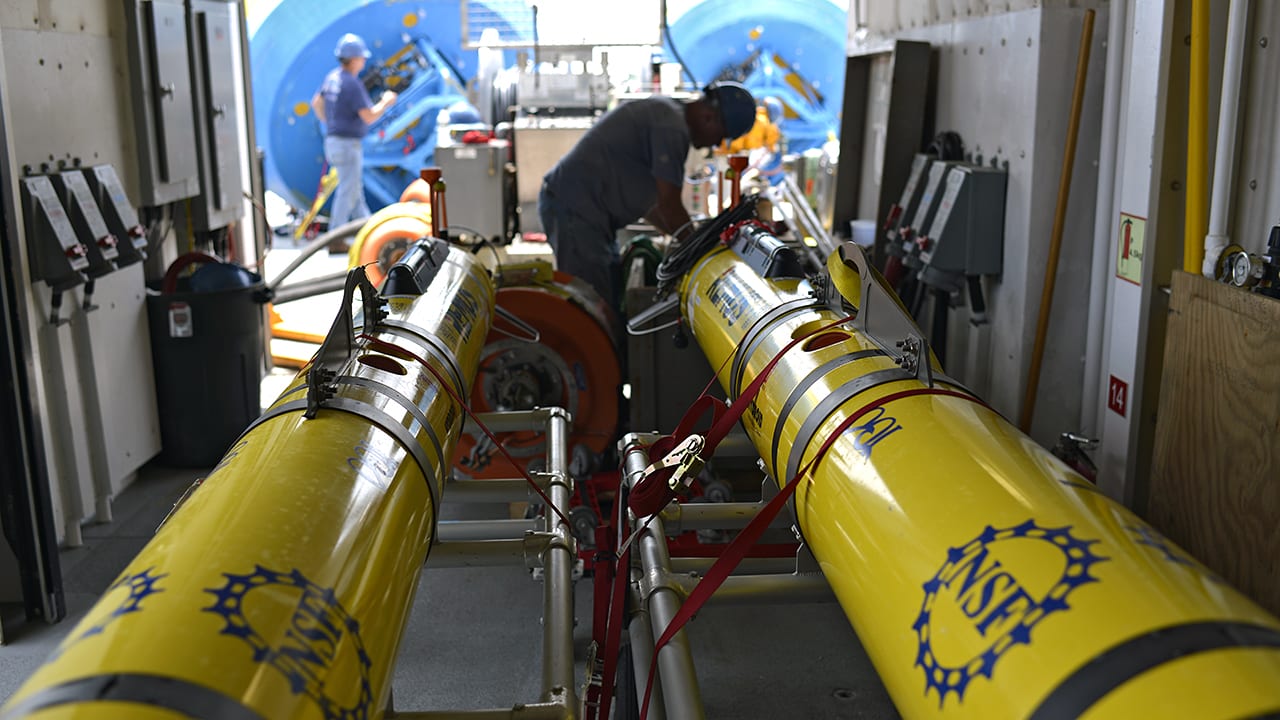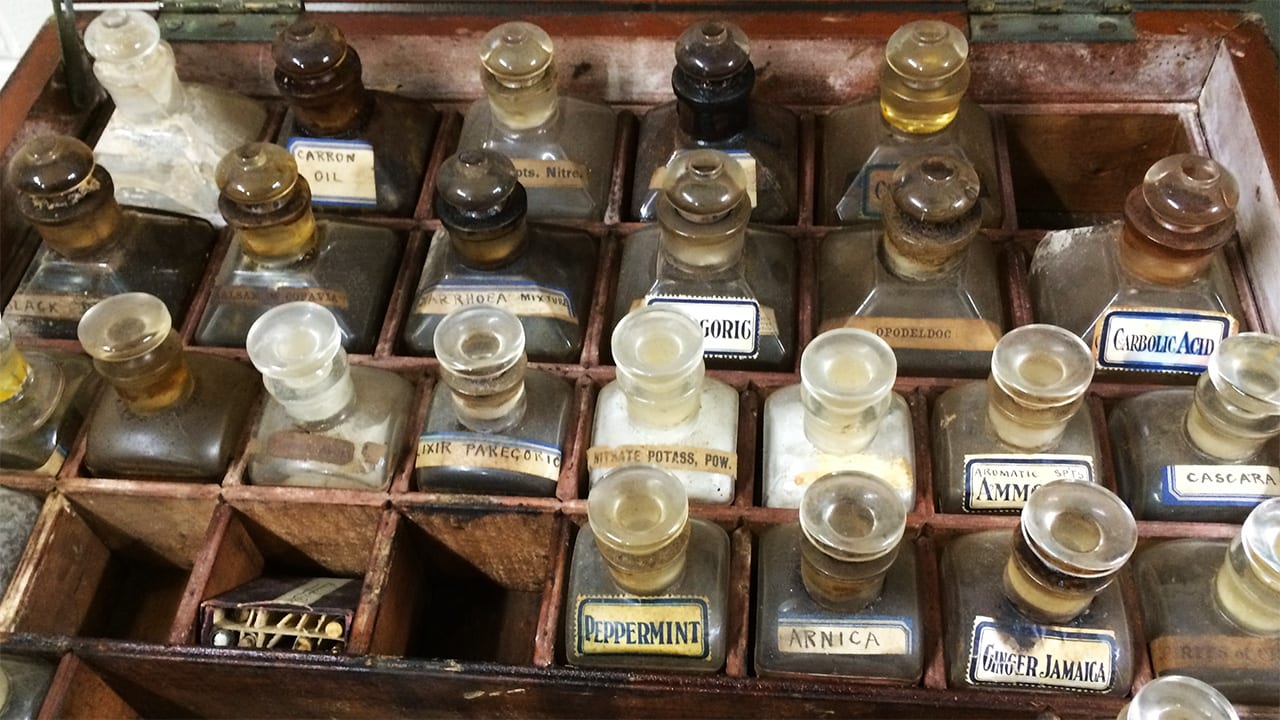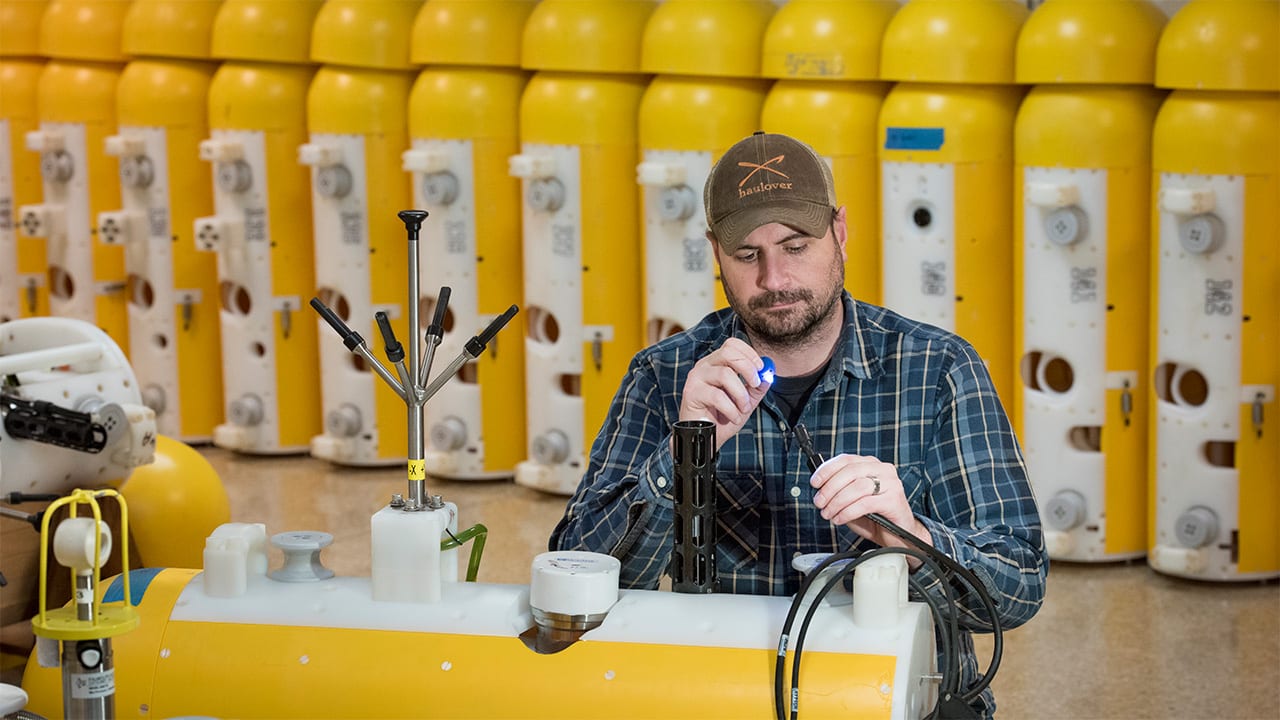Multimedia
Wonders of the Deep
Lily Foley (foreground) and her teacher and classmates from the Woods Hole Daycare Cooperative sized up the Deep Sea Exhibit, which features giant tubeworms and other unusual creatures found at…
Read MoreA School for Alewives
Northeast U.S. coastal waters are known for their productive fisheries, and alewife are a big food source for commercial species. WHOI biologist Joel Llopiz investigates the factors that affect the survival of alewife…
Read MoreTricky Tactics
A team of WHOI researchers on the R/V Neil Armstrong encountered these unusual-looking specimens last summer, about 100 miles off the southern coast of New England. They collected the fish…
Read MoreFishing for Data
WHOI physical oceanographer Glen Gawarkiewicz discusses climate change at a dinner for WHOI Associates. Gawarkiewicz told Associates about his partnership with local fishermen, who are helping him track changes in…
Read MoreSPURing a New View of Salinity
Researchers on the 2014 SPURS expedition aboard the research vessel Knorr (far right) release an autonomous glider from a small boat on a mission to study salinity and micro-scale mixing…
Read MoreThermal Eye in the Sky
WHOI postdoctoral investigator Erika Johnson prepares to launch an aerial drone to survey the Coonamessett River in Falmouth, Mass. With its thermal camera, the drone can identify potential groundwater springs—which…
Read MoreSmarter Than the Average ROV
Dave Lovalvo, president of Global Foundation for Ocean Exploration, deploys a remotely operated vehicle (ROV) to examine the geothermically active bottom of Yellowstone Lake in Wyoming. WHOI scientist Rob Sohn, who has explored hydrothermal vents on…
Read MoreShowcasing Marine Robotics
In WHOI’s Laboratory for Ocean Sensors and Observing Systems, underwater robotics exhibitors talk to Deputy Assistant Secretary of the Navy for Unmanned Systems Frank Kelley (center, USMC Brigadier General, Ret.)…
Read MoreCoring Yellowstone Lake
Tourists visiting Yellowstone National Park can see steaming fissures, bubbling mudpots, and explosive geysers from roadside stops. But beneath the surface of Yellowstone Lake, hidden from view, is a fount…
Read MoreRemote Research
In the low light of Antarctic spring, a researcher on the ice watches for a plane. A research team, including MIT-WHOI Joint Program student Laura Stevens, traveled to the Ross…
Read MoreEasy Launch, Fast Response
WHOI engineer Amy Kukulya (left) and first mate Drew Friel launch a REMUS autonomous underwater vehicle (AUV) from the R/V Discovery into a patch of fluorescein dye in Buzzards Bay,…
Read MoreDigging Out
WHOI seismologist Ralph Stephen and collaborators at Scripps Institution of Oceanography, Washington University in St. Louis, and Colorado State University are leading an effort to better understand the disintegration of…
Read MoreDigging Into a Stormy Past
WHOI coastal geologist Jeff Donnelly, Texas A&M University at Galveston graduate student Tyler Winkler, and Winkler’s advisor, geologist Pete van Hengstum (left to right) pause for a photo during a…
Read MoreScience Under Pressure
MIT-WHOI Joint Program student Emily Sarafian wields a hydraulic jack to demonstrate how to set up a piston-cylinder apparatus. She uses the device to carry out high-temperature, high-pressure experiments on…
Read MoreReady Response
Fluorescine dye stood in for oil in a recent test of a new system to track oil spills underwater using a REMUS autonomous underwater vehicle (AUV), visible in the background.…
Read MoreBeautiful Plankton for an Urgent Cause
Diatoms—a type of phytoplankton—are intricate and beautiful under the microscope. In this composite image, a micrograph of a diatom is flanked by a pair of diatom-inspired earrings created by survivors…
Read MoreRaindrops on the Ocean
Most of the surface of Earth is covered by ocean, so it follows that most of the rain falling on the planet falls on the ocean. That rain, in turn,…
Read MoreRed Boat, White Ice, Blue Sea
During a recent cruise on R/V Neil Armstrong for the Overturning of the Subpolar North Atlantic Program (OSNAP), WHOI scientist Bob Pickart and his team sent a small boat out…
Read MoreUnder Threat
A shell-less pteropod swims under sea ice in Antarctica. Pteropods are small marine snails that use wing-like appendages to “fly” though the water. For that reason, shelled pteropods are commonly…
Read MoreTarget: Science
WHOI coastal scientist Peter Traykovski sets up a GPS target for a remotely operated aerial vehicle in the North River estuary in Marshfield, Mass., this past September. The drone imaging…
Read MoreAOPE Slideshow
AOPE Top Story Slideshow
A Piece of History
This antique medicine chest was used by the crew of the original Atlantis, WHOI’s first research vessel and the first ship built for oceanographic research. The chest retired with the…
Read MoreWe Can FIXIT
Engineer Brian Hogue works on a McLane Moored Profiler (MMP) in WHOI’s Field Instrumentation and eXperiment Implementation Team (FIXIT) lab. Hogue is one half of a two-man team with fellow…
Read More
